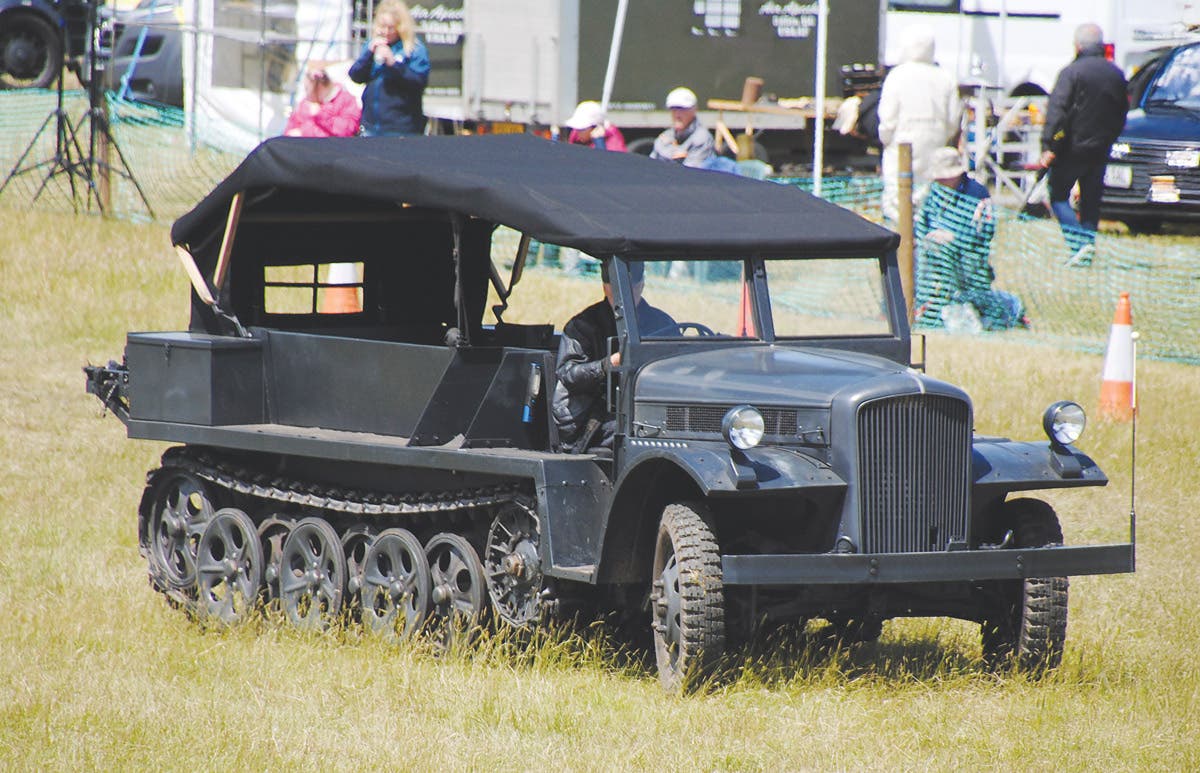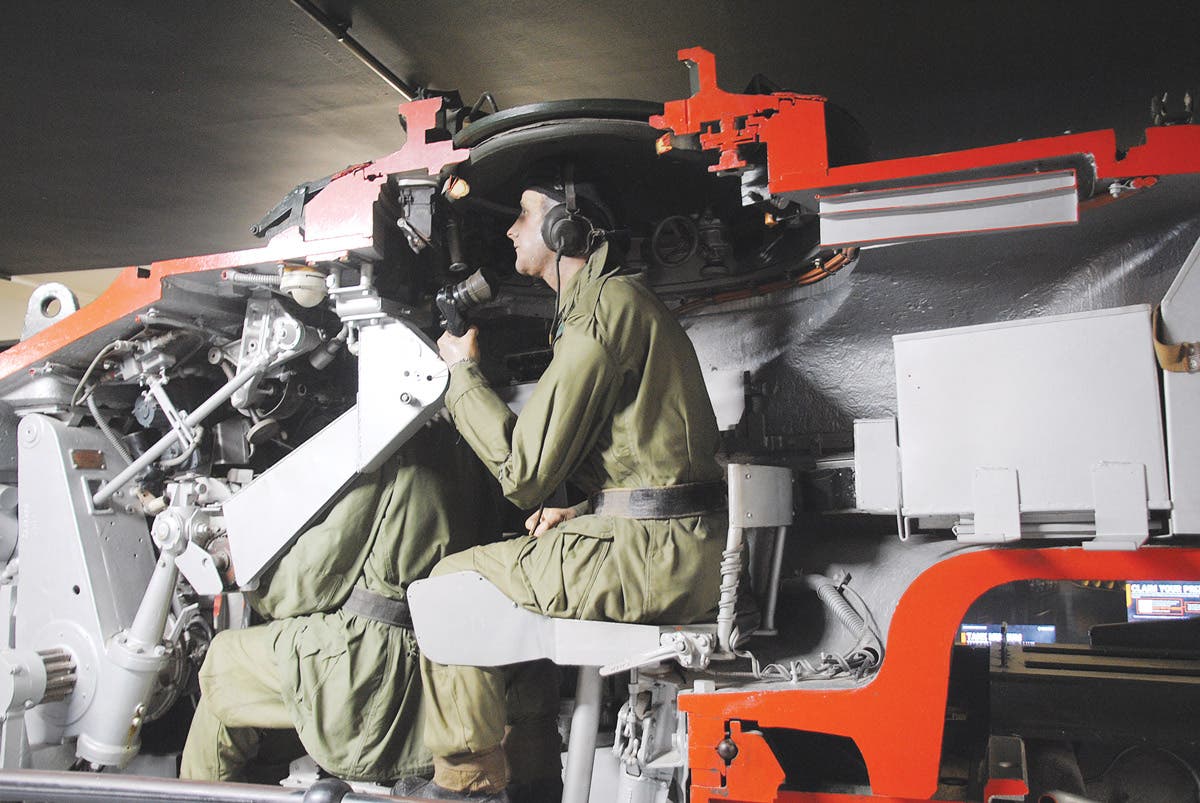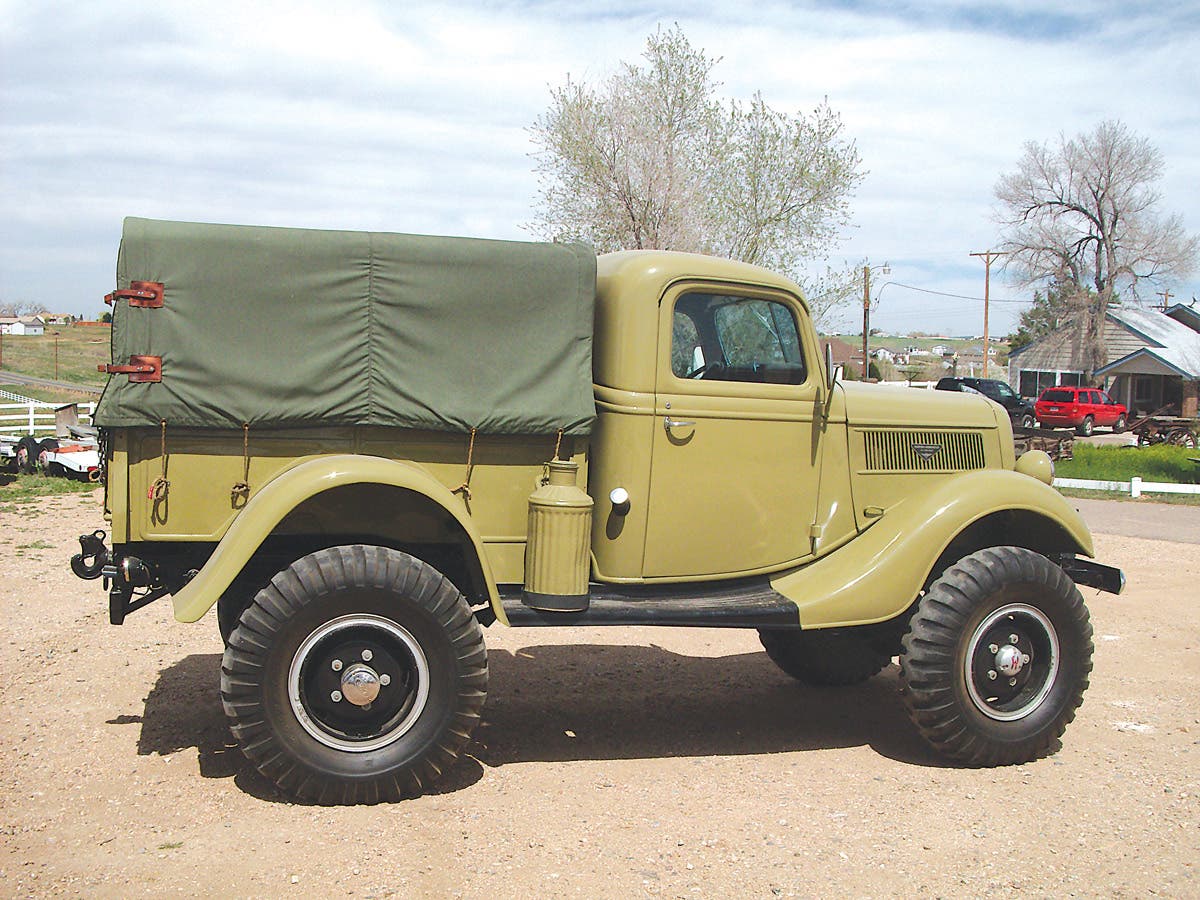A Stubborn Mule
It happened in Aberdeen, Maryland. A loud backfire and the M274 Mule I was happily driving, stopped running. There are numerous reasons a mule could decide to stop running and they usually pick a reason at the most inconvenient time for the operator. This article will address my specific problem and its solution.
It happened in Aberdeen, Maryland. A loud backfire and the M274 Mule I was happily driving, stopped running. Luckily, I was at the East Coast Rally hosted by The Washington Area Collectors/Blue and Gray Military Vehicle Trust (WAV/B&G MVT) at the Ripkin minor league baseball complex.
The mule had run continuously hauling priceless treasures and friends the day before. Luckily for me, David Kelone was one of the many rally attendees. David had arrived several days earlier in his customized truck loaded an assortment of mules along with many parts. If anyone could help coax my stubborn mule into operation, it would be David.
DIAGNOSING THE PROBLEM
There are numerous reasons a mule could decide to stop running and they usually pick a reason at the most inconvenient time for the operator. This article will address my specific problem and its solution.
It was before 0800 when mule stopped running and was pushed several hundred yards across the parking lot to David's encampment. After David attended to Lady, his extremely obedient black Labrador retriever, he chuckled and asked me "So what's the problem here besides the nut between the seat and the steering wheel"
In this view of the engine compartment showing the magneto and governor location note the linkage, throttle cable, and oil line that need to be disconnected. The slack in the throttle spring is due to the foot basket being removed in shop to conserve space.
After a short conversation David gathered up a few common mechanics tools, including some specially modified standard wrenches. By 0900, a few mule owners and a few other folks had gathered to check out the activity around my sick mule.
David conducted a "mule school" that morning here is what we learned.
1. The first and easiest thing to do is pull the dipstick. Check the level of engine oil and smell the oil for gasoline. Gasoline in the oil would indicate a total fuel pump diaphragm failure, the need for fresh motor oil and a new fuel pump.
The mule will continue to run while pumping fuel into the crankcase. However, the motor will eventually self-destruct as the oil is thinned out beyond its lubricating ability.
There was no trace of gasoline in the oil in my stubborn mule, so the fuel pump was operational.
2. The next thing we checked was the fuel return line. This 1/8" steel line is susceptible to blockage, causing the engine to be over fueled, stall out, and refuse to restart.
This photo shows the governor and nylon gear removed and showing the yellow paint on the timing gear along with the placement of the V-notch on the magneto.
Under David's direction, I used a custom bent 3/16" wrench and disconnected the fuel return line from the carburetor. Using lung power, we established the line was not blocked. (Remember to open the fuel cap before attempting to blow into the return line).
3. Next order of business was to crank the engine with the key or using your pull starter to check for a healthy stream of fuel being supplied by the fuel pump with the return line disconnected. My fuel pump also passed the test.
We determined fuel delivery was not the cause of my lazy mule. I elected to replace the engine mounted fuel filter as a precaution since it was the first thing I checked before we pushed the mule to David's place and the old gasket was not resealing.
At this point we began the search for fire and air.
1. We disconnected the spark plug wires from the spark plugs with a 3/4" wrench. Using a deep 7/8" socket we removed the spark plugs for inspection.
The spark plugs were not fouled or damaged. David checked the spark plugs to ensure a .030 gap and I reinstalled them. The mule still refused to start.
2. Next, we removed the top shroud of the engine. We examined the air intake piping and rubber connecting hoses and found them in order. We also examined the air filter element and it was in serviceable condition so we had air.
This is when the process gets a little more involved. The magneto had to come off and be checked for spark.
The timing marks shown here are located on the blower motor belt cover and the engine pulley. Making these line up points visible with a sharp point marker will assist in lining them up to time the engine.
The magneto generates a current when either turned by hand or the running engine. The magneto can be tested for spark while mounted on the engine.
Remove the spark plug wires from the spark plugs using a 3/4" wrench. Remove the spark plugs from the cylinder heads using a 7/8" deep socket. Remove one spark plug wire from the magneto. Holding the other spark plug wire with insulated pair of pliers 1/8" from the engine block and turn the engine over manually using a 15/16" socket. As the magneto "clicks" you should see a spark.
My magneto did not produce a spark. It was toast for now. Luckily, David had an NOS magneto on the truck. Although it was new, David tested this unit and it did not produce a spark. This 30-year-old NOS magneto had accumulated corrosion on the points. David opened up the magneto by removing the cover and proceeded to clean up the points and upon retest it produced a spark.
CHANGING A MAGNETO
Before removing the magneto, the governor and its associated linkage, cable and oil line must be disconnected and removed. The air intake pipe runs past the governor and it will need to be removed by loosening the hose clamps on each end.
Here is a closer look at the V-mark on the magneto. Aligning the V with the painted notches on the timing gear will get the engine running allowing for fine tuning by rotating the magneto.
Using a flat screwdriver, disconnect the governor linkage from the governor and reinstall the screw in its place back on the governor to prevent misplacing it. Disconnect the throttle cable and spring.
Taking a sacrificial 3/16" open end wrench from your tool box put approximately a 30 degree bend in the handle of the wrench close to the open end side until it fits on the governor oil line fitting. Using the bent 3/16" wrench disconnect the oil line from the governor.
A long handled straight screwdriver placed through the engine basket will loosen and remove the 4 screws securing the governor to the housing. Along with the governor, remove the nylon drive gear and place it on the governor shaft for safekeeping.
TIMING THE MULE
After removing the magneto from a mule and reinstalling it, the engine needs to be timed. Luckily, David was there to walk me through the procedure.
Timing the mule engine is not a daunting task. There will be no unpleasant flashbacks to youthful antics under the hood wrestling with your distributor.
Using a 15/16" socket and a long extension, locate the nut securing the main pulley on the rear of the engine. Some mules have engines that can be turned with an adjustable wrench. Use what works for your mule.
Turn the engine clockwise while looking for the yellow paint marking o n the toothed gear exposed by removing the governor. Once the yellow paint is visible there will be a letter V stamped on one tooth of the magneto.
The objective is to line up the two marks and reinstall the magneto. Place the V marked tooth of the magneto in the center of the painted teeth of the timing gear. Do not get too excited yet as the magneto may not be in its final position at this time.
Two additional marks need to be located. One mark is on the pulley and the other is on the engine shroud. The pulley can have a notch or as in my case a slot cut in the face was the line up mark point. Locate the 18-degree TDC mark on the shroud and mark it with a fine marker.
Once again, use a socket or adjustable wrench to turn the engine clockwise until the yellow paint is once again visible. While you slowly turn and as the paint on the gear approaches, the magneto will click.
The click must happen as the marked notches on the pulley and the 18-degree TDC mark align. If they do not line up, adjust the magneto by loosening the bolts and rotating it until the marks line up. Should the marks and the click not coincide after adjustment, the magneto is probably a gear tooth off and will need to be removed and reinstalled moving the V notch of the magneto one tooth. After moving the gear one tooth and reinstalling the magneto, once again rotate the engine and listen for the click. Adjust the magneto click to the marks and the mule will be in time enough to start up.
Reinstall the governor, nylon gear, linkage and throttle cable. Remember to reinstall the governor oil line, as it will squirt oil all over the engine when it starts if you don't! Reinstall the spark plugs and attach their wires to the plugs and magneto. Start the engine, adjust the magneto for smooth running, and tighten the bolts. The job is complete.






